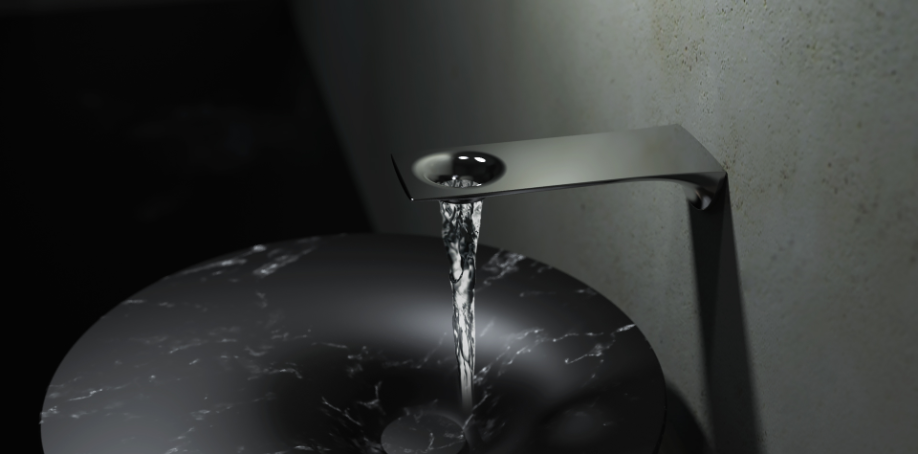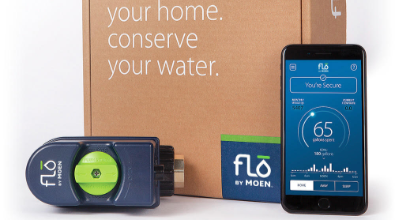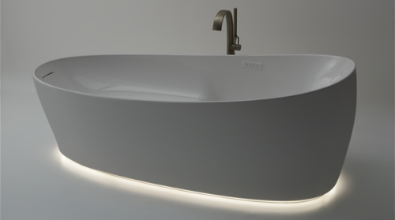A Virtualized Revolution: The Rise of Tech in Manufacturing
The digital revolution is transforming manufacturing, causing changes similar to those that continue to disrupt media, consumer products, healthcare and many other sectors; the explosion in data and new computing capabilities – along with advances in other areas such as artificial intelligence, automation, robotics and human-machine interaction – are unleashing innovations that are changing the nature of manufacturing itself.
 Plumbing Manufacturers International (PMI) members are innovating the ways in which they manufacture their products; not only are the products more technologically advanced than ever before, but so are the facilities and processes used make them, creating exciting career opportunities within the industry. For example, at the 2019 Kitchen & Bath Industry Show (KBIS), four PMI members were recognized with Best of KBIS Awards for their innovations.
Plumbing Manufacturers International (PMI) members are innovating the ways in which they manufacture their products; not only are the products more technologically advanced than ever before, but so are the facilities and processes used make them, creating exciting career opportunities within the industry. For example, at the 2019 Kitchen & Bath Industry Show (KBIS), four PMI members were recognized with Best of KBIS Awards for their innovations.
The DXV by American Standard Blade 3D-printed faucet boasts what may be one of the most interesting ways to manufacture a bathroom necessity. The Blade is printed directly into stainless steel and is finished by hand to add the extra human touch. 3D printing is just one representation of the evolution of additive manufacturing in the plumbing product world.

Another KBIS award-winner was PMI member Hansgrohe, which developed a shower jet named PowderRain, which has the technology to spray water droplets that are so light that they fall gently on the skin without bouncing off. Developed through rigorous testing in an acoustics chamber, the PowderRain produces spray designed to be exceedingly quiet and splash-resistant while retaining warmth on the skin. The use of acoustics chambers for testing and other ways of innovative thinking are what keeps many companies in the plumbing manufacturing industry ahead of the game.

PMI member Moen was recognized by KBIS for developing a very “tech” savvy way to monitor water usage and promote water conservation through its MicroLeak technology. Called Flo by Moen, this system can monitor and detect pipe leaks in water supply systems -- some as small as a single drop of water per minute throughout the home – including behind walls or in the foundation. Flo by Moen also features FloSense, a proprietary machine learning technology, which applies algorithms to learn how the home uses water and to alert the homeowner if it senses abnormalities.

PMI member TOTO won an award for its Flotation Tub with ZERO DIMENSION. Beautifully designed, and constructed of Galaline, a man-made marble, the tub simulates zero gravity by offering bathers a weightless experience. After 10-years’ research on bathing's relaxation effect, biomechanics, neuroscience and ergonomics, TOTO found that a unique body posture—the reclining body stabilized and the hips, knees and ankles flexed—reduced the joints' mechanical energy/load to nearly zero – replicating the body's posture at zero gravity and enabling the most relaxing rest possible.

The future of manufacturing technologies
According to articles published on the McKinsey & Company website, industry and academic leaders agree that the next phase in manufacturing will include innovative technologies that will have the capacity to transform the industry. A value chain – as defined in Michael E. Porter’s book titled “Competitive Advantage” – describes the steps from start to finish that are necessary to produce a product. So, in our world, these up-and-coming technologies will digitize the manufacturing value chain in all aspects – from research and development to factory operations and marketing, McKinsey & Co. says. This industry-wide digital connectivity among managers, workers, consumers and physical assets will create additional value, and the manufacturing landscape will be changed forever.
Within the U.S. economy, the manufacturing industry generates more data than any other sector, McKinsey & Co. says. With that being said, few manufacturing companies have harnessed these data to exploit their potential due to a massive “tech gap” between facilities. By tapping into the data they generate – and into any data that is publicly available – companies can improve their practices, make their value chain processes more effective, and uncover valuable insights to drive profits and growth.
For example, consider traditional car manufacturers and Uber, which both function to transport people from place to place. The manufacturers design and produce personal vehicles for purchase, using data to meet the preferences of customers; Uber provides rides for consumers via its employed drivers, using data to match riders with available vehicles. These data, coupled with its algorithms and growth prospects, have already made Uber, valued at $50 billion, more valuable than the physical assets, intellectual property and brand names of some of the largest car companies, states McKinsey and Co.
With that said, this “tech gap” is being addressed head-on by manufacturers. In the United States, the National Network for Manufacturing Innovation functions to speed new manufacturing technologies to market. Similar efforts are underway across the globe, including Germany’s Industry 4.0 effort and China’s Made in China 2025. This effort to be on the leading edge of technology in the manufacturing field is spreading fast.
How this fits into the manufacturing workforce
Historically, we have recognized two groups within the U.S. workforce: “white collar” and “blue collar.” This applies to the manufacturing workforce as well, explains Manpower’s “The Future of the Manufacturing Workforce” report. In manufacturing, managers and engineers who typically possess four-year degrees make up the “white collar” category, while the “blue collar” category is made up of skilled tradespeople and other workers who do physical labor and may have trade school or high school degrees, the report says.
However, an intriguing finding in the report is the emergence of a third group in manufacturing during today’s technological era. Called technicians, or “techs” for short, these workers develop technology in the manufacturing field, increase its presence in facilities, and troubleshoot any issues that may come along with it. These “techs” are there to maintain the increasing number of computer- and technology-driven manufacturing devices in the contemporary factory, according to McKinsey & Company.
All “robots are taking over the world” jokes aside, these technologies and advancements in product manufacturing are what the future holds for the manufacturing world. We can use these innovations to save water, reduce our carbon footprint, and states McKinsey and Co. produce jobs. Not all robots are bad, right?
